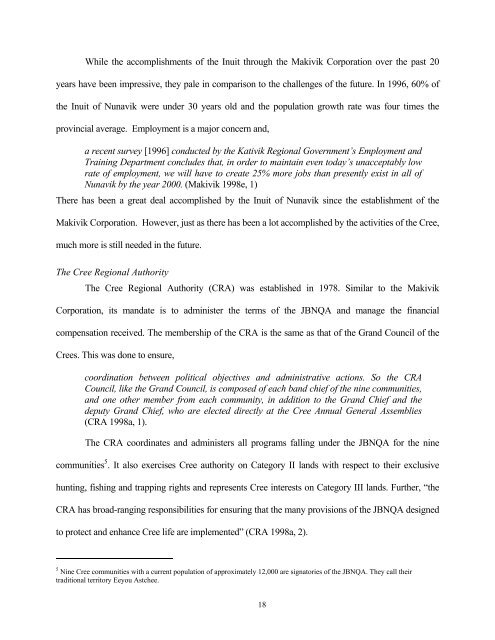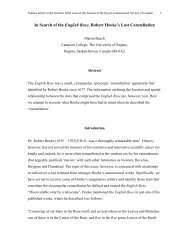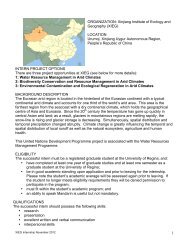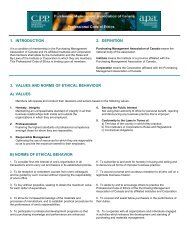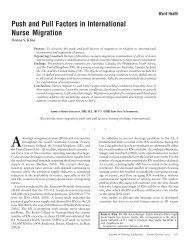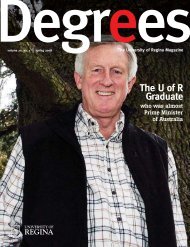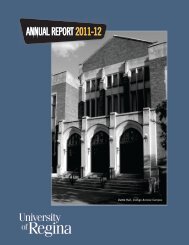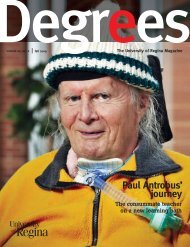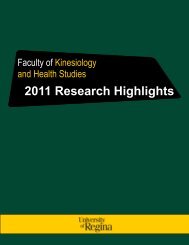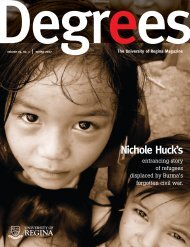The Indigenous Land Claims in New Zealand and Canada
The Indigenous Land Claims in New Zealand and Canada
The Indigenous Land Claims in New Zealand and Canada
You also want an ePaper? Increase the reach of your titles
YUMPU automatically turns print PDFs into web optimized ePapers that Google loves.
While the accomplishments of the Inuit through the Makivik Corporation over the past 20years have been impressive, they pale <strong>in</strong> comparison to the challenges of the future. In 1996, 60% ofthe Inuit of Nunavik were under 30 years old <strong>and</strong> the population growth rate was four times theprov<strong>in</strong>cial average. Employment is a major concern <strong>and</strong>,a recent survey [1996] conducted by the Kativik Regional Government’s Employment <strong>and</strong>Tra<strong>in</strong><strong>in</strong>g Department concludes that, <strong>in</strong> order to ma<strong>in</strong>ta<strong>in</strong> even today’s unacceptably lowrate of employment, we will have to create 25% more jobs than presently exist <strong>in</strong> all ofNunavik by the year 2000. (Makivik 1998e, 1)<strong>The</strong>re has been a great deal accomplished by the Inuit of Nunavik s<strong>in</strong>ce the establishment of theMakivik Corporation. However, just as there has been a lot accomplished by the activities of the Cree,much more is still needed <strong>in</strong> the future.<strong>The</strong> Cree Regional Authority<strong>The</strong> Cree Regional Authority (CRA) was established <strong>in</strong> 1978. Similar to the MakivikCorporation, its m<strong>and</strong>ate is to adm<strong>in</strong>ister the terms of the JBNQA <strong>and</strong> manage the f<strong>in</strong>ancialcompensation received. <strong>The</strong> membership of the CRA is the same as that of the Gr<strong>and</strong> Council of theCrees. This was done to ensure,coord<strong>in</strong>ation between political objectives <strong>and</strong> adm<strong>in</strong>istrative actions. So the CRACouncil, like the Gr<strong>and</strong> Council, is composed of each b<strong>and</strong> chief of the n<strong>in</strong>e communities,<strong>and</strong> one other member from each community, <strong>in</strong> addition to the Gr<strong>and</strong> Chief <strong>and</strong> thedeputy Gr<strong>and</strong> Chief, who are elected directly at the Cree Annual General Assemblies(CRA 1998a, 1).<strong>The</strong> CRA coord<strong>in</strong>ates <strong>and</strong> adm<strong>in</strong>isters all programs fall<strong>in</strong>g under the JBNQA for the n<strong>in</strong>ecommunities 5 . It also exercises Cree authority on Category II l<strong>and</strong>s with respect to their exclusivehunt<strong>in</strong>g, fish<strong>in</strong>g <strong>and</strong> trapp<strong>in</strong>g rights <strong>and</strong> represents Cree <strong>in</strong>terests on Category III l<strong>and</strong>s. Further, “theCRA has broad-rang<strong>in</strong>g responsibilities for ensur<strong>in</strong>g that the many provisions of the JBNQA designedto protect <strong>and</strong> enhance Cree life are implemented” (CRA 1998a, 2).5 N<strong>in</strong>e Cree communities with a current population of approximately 12,000 are signatories of the JBNQA. <strong>The</strong>y call theirtraditional territory Eeyou Astchee.18


